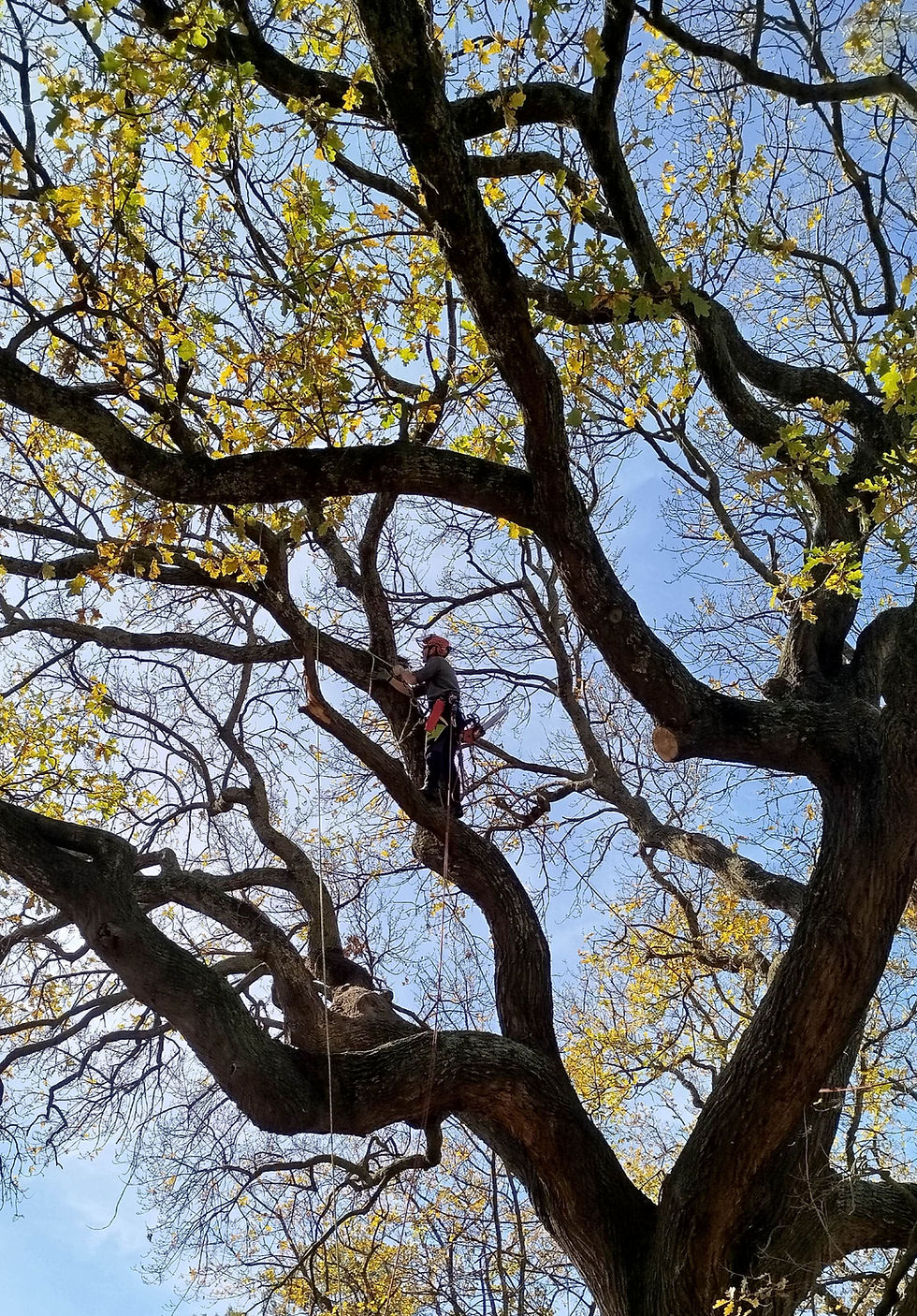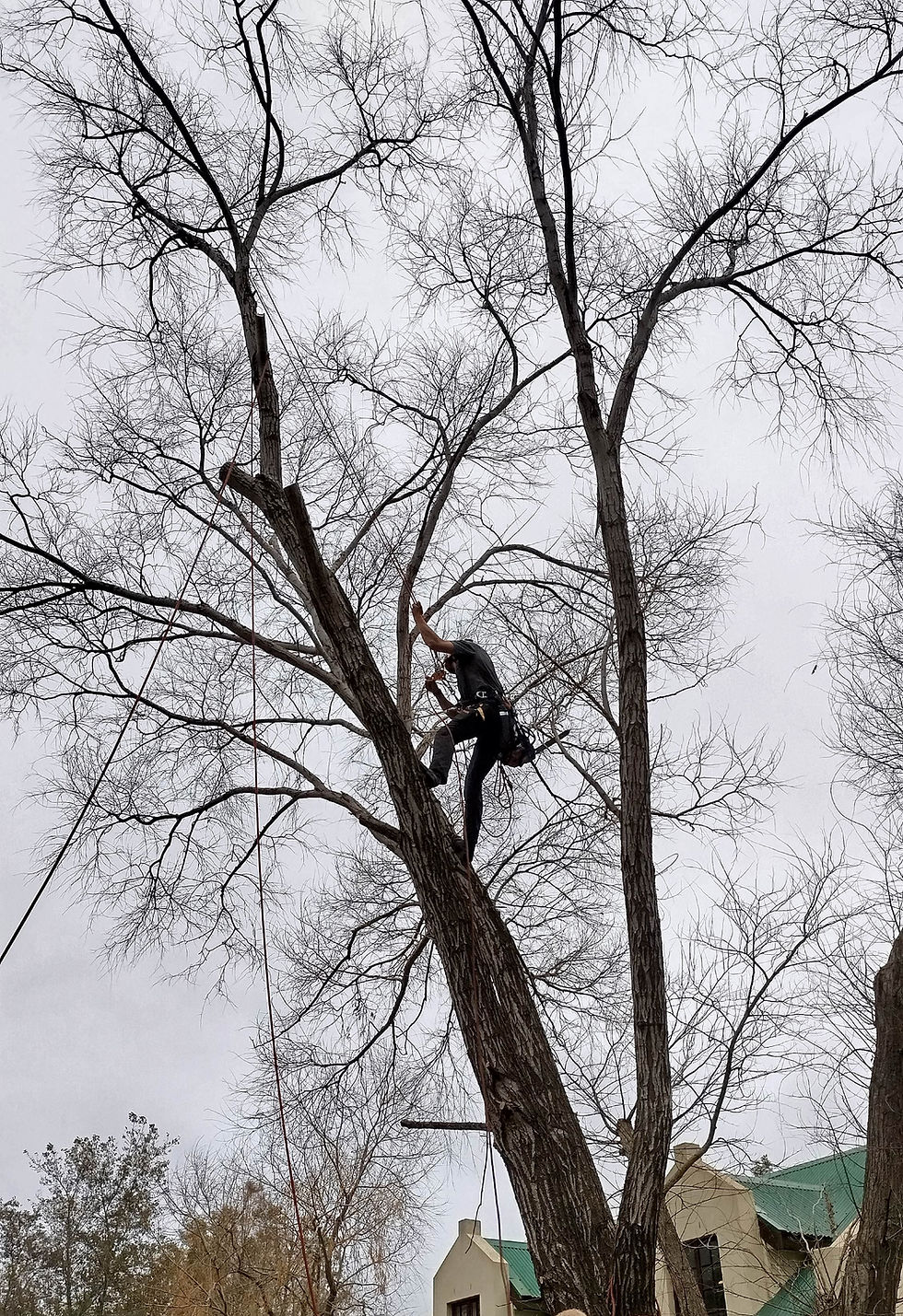Why Should I Hire a Professional Arborist for Tree Care?
- Shelby Pietersen

- Oct 25, 2023
- 4 min read
Updated: Sep 4
Can’t I just prune it myself?
Is it really worth paying for expert tree care?
These are the questions we hear all the time — and we get it. Tree work can look simple from the outside. But when things go wrong, they go really wrong — structurally, legally, financially.
At Overberg Arborists, we work with property owners who value long-term thinking, smart property decisions, and safe, sustainable care. And that means knowing when to DIY... and when to call a pro.
Here’s what professional arborists actually do (and why it matters more than you think).

What Does a Professional Arborist Actually Do?
A professional arborist is trained in the science and practice of tree care — everything from planting and pruning to risk assessment, disease management, and removals.
We don’t just “cut trees.”
We understand why, how, and when a cut supports tree health, safety, and structural integrity — or compromises it completely.
Is Professional Pruning Really That Different?
Yes. And here’s why.
Proper pruning requires:
Knowledge of species-specific growth patterns
Understanding of structural weaknesses
Awareness of seasonal timing and wound response
The right tools and cutting techniques
When pruning goes wrong, it doesn’t always show immediately. But we’ve seen the consequences years later — split limbs, internal decay, poor canopy development, pest infestations, and expensive removals that could’ve been avoided.
A professional arborist knows how to:
Remove deadwood without stressing the tree
Improve airflow and light without over-thinning
Avoid flush cuts, stubs, and topping (all of which harm the tree)
Preserve the natural shape while ensuring safety and growth
And if you're dealing with protected or mature trees? Precision isn’t optional — it’s legally required.

How Do Arborists Diagnose Tree Health Issues?
Trees don’t show symptoms like animals or people — and often, the signs of stress, disease, or infestation are subtle.
We look at:
Leaf colour, texture, and timing
Bark damage, cankers, or fungal growth
Unusual branching patterns or crown dieback
Soil condition, drainage, and compaction
Root zone activity and nearby infrastructure
Professional arborists can spot what others miss — and act early enough to prevent decline or failure.
Whether it’s a pest outbreak (like PSHB), fungal infection, or root rot, the right diagnosis means the right intervention.
Can Arborists Remove Dangerous or Dying Trees?
Yes — and safely.
Tree removals are often more complex than they look. One wrong cut, one dropped limb, or one swing toward a structure can cause thousands in damage.
We assess:
Structural integrity
Lean angle
Wind exposure
Root health
Nearby risks (power lines, buildings, paving)
We also secure the right permits (where required), manage debris sustainably, and leave your site safe and clean.
Bottom line: tree removals should never be guesswork. And they should never be done without a clear hazard assessment.

What If I’m Planting New Trees — Do I Need an Arborist?
If you want the tree to survive more than a few seasons — yes.
Choosing the wrong species, planting it too close to structures, or failing to prepare the soil are the three fastest ways to set a tree up for failure.
A professional arborist can:
Recommend site-appropriate species (indigenous, drought-tolerant, non-invasive)
Ensure correct planting depth, spacing, and soil prep
Support early training and pruning for long-term form
Protect roots, branches, and bark during transplanting
If you’re investing in a tree now, it’s worth investing in a plan that helps it thrive for decades.
Do Arborists Help With Preventative Tree Maintenance?
That’s actually what we do best.
Proactive tree care prevents:
Falling branches during storms
Pest and fungal outbreaks
Costly removals later
Decline in tree health due to neglect
An arborist will build a seasonal or annual care plan for your property — including pruning, structural assessments, soil monitoring, pest control, and canopy management.
This is especially important for:
Large properties or estates
Heritage or protected trees
Fruit tree orchards
Public spaces, schools, or businesses
Coastal or wind-prone landscapes
Healthy trees cost less to maintain than unhealthy ones. We make sure they stay that way.
What About Insurance and Legal Cover?
Here’s a question most homeowners forget to ask:
“What happens if something goes wrong during the job?”
If your contractor isn’t:
Fully insured
Trained to work around power lines
Familiar with local regulations
Trained in hazard response
...then you may be liable for any damages, injuries, or legal breaches.
Professional arborists carry public liability insurance, safety training, and the legal knowledge to protect both your property and your rights.

FAQ: Quick Answers to Common Tree Care Questions
Q: Can I prune my own tree if it’s small?
A: Yes — if you're removing deadwood or shaping small branches. But anything involving ladders, large limbs, or structural changes should be handled by a pro.
Q: How often should trees be checked by an arborist?
A: At least once a year, or after major weather events. High-risk trees near buildings or roads may need seasonal checks.
Q: Can arborists help with trees during construction projects?
A: Absolutely. We create tree protection plans, monitor excavation zones, and help reduce root damage — especially on heritage or mature specimens.
Q: What are the early signs my tree might be struggling?
A: Wilting or yellowing leaves, thinning canopy, bark cracks, fungal growth, or unusual lean. If it looks different than usual, get it checked.
Q: Are there legal restrictions on cutting or removing trees?
A: Yes. Many municipalities have by-laws protecting indigenous or large trees. Arborists know what permits are needed and how to navigate the process.
Final Thought: Good Tree Care Isn’t a Luxury — It’s a Long-Term Strategy
Whether you have one tree or fifty, how you care for them matters.
Tree removals can be expensive. So can blocked plumbing, cracked paving, fallen branches, and council fines.
Hiring a professional arborist means fewer risks, stronger trees, and a property that grows in value — not just in size.
At Overberg Arborists, we don’t sell tree services. We provide expert care for living systems — with knowledge, respect, and zero shortcuts.
Need a proper tree assessment?
We’ll walk your site, inspect your trees, and give you honest, practical advice.





Comments